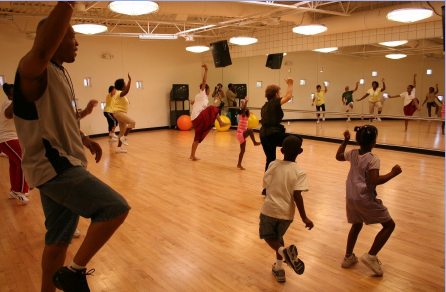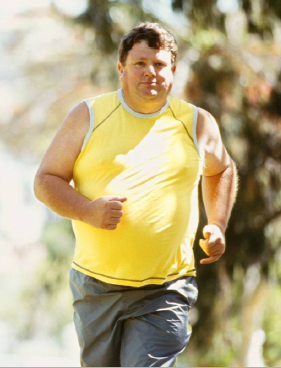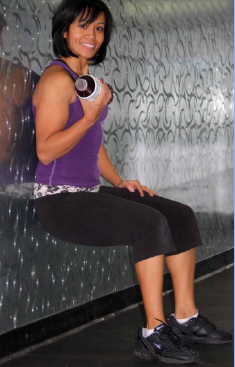Introduction:
The American College of Sports Medicine (ACSM) – the leading authority on physical activity, exercise and fitness – provides general guidelines for exercise prescription. Although health benefits can occur at low levels of activity, the ACSM provides recommendations to help achieve maximum health and fitness benefits.

Taking the step to Get Fit! will help you achieve greater health and physical fitness benefits by getting your heart stronger and keeping your muscles healthy. All you have to do is boost up your favorite activity (refer to Get Active! UNCE Fact Sheet 10- 81) and make it a cardio program for your heart. This can be done by working just a little longer, a little more often and with a little more gusto!
To achieve the best results, warm up before you start your activity and cool down when you are done. A warm up simply means to start the movements slowly and loosen up your joints and muscles, such as walking or light bicycling.
Next, progress into a moderate activity level for 30 minutes/5 times a week. If you are walking, you can gauge this level by counting your footsteps for one minute. Moderate levels require approximately 90-113 steps per minute (113 steps is for individuals with shorter legs).
Using the “talk test” is also very effective. This means gauging how hard you are working, by how hard you are breathing.

For moderate activity, your heart rate and breathing will increase, and you may even sweat a little, but you should be able to carry on a conversation comfortably while doing the activity. If you have rapid breathing or become too out of breath to carry on a conversation, the activity may likely be vigorous. As long as you don't have any pain and are approved by your doctor, you can achieve similar results by performing vigorous exercise in less time – 20 minutes/3 times a week. Remember to cool down slowly when you are finished, allowing your heart to return to its normal resting rate.
As you move towards a complete program, the ACSM recommends adding muscle strengthening activities to help your muscles, bones and joints get stronger. Lift weights, dumb bells, quart-size water bottles, heavy books or use resistance bands. Perform 8 to 12 lifts (called repetitions or reps) until you feel you can’t do one more. If you can do 12 reps fairly easily, you may need to increase the weight. Be sure to exercise each of the major muscle groups* (approximately 10 to 12 different exercises). Never exercise the same muscle group two days in a row (for example, do exercises for the upper body* one day and lower body* the next).
Push-ups, sit-ups and wall sits are other great ways to achieve strength using your own body weight.
Finally, add some flexibility activities to your program. Stretching is one of the basic tenets of physical fitness. A great way to stretch your muscles is to lie down with some pleasant music after completing your entire workout. Your muscles are tired and your body is relaxed. Stretch each muscle to mild discomfort (not pain). Hold the stretch for about 20 to 30 seconds. You will feel terrific and recover faster!

Record your progress over time and see how you are improving. Monitoring your exercise and recovery heart rate is also a good way to measure your fitness changes.
The physical activity guidelines recommend doing 20 to 30 minutes of moderate to vigorous intensity activity for at least three days per week. But the most important thing is to set achievable goals (number of days and minutes you know you can do), then gradually increase. You can always add an extra day or even two. But build slowly until you are able to meet the recommended guidelines. You’ll love the difference it makes!
*Upper body exercises consist of working the shoulders, biceps, triceps, chest, back and abdominals. Lower body exercises include the thighs, hamstrings, hips, buttocks and calves.
| What is my goal? |
Get Fit! |
| How do I get there? |
“Turn Your Activity Into Fitness!” (ACSM* Guidelines)
Make your activity cardio-friendly!
Do your fun activity more often & longer
Add a warm up & cool down
|
| What do I do? |
Add Muscle
Strength/Endurance
Use weights, resistance bands or perform body weight exercises (alternate days 1 set, 8 - 12 reps)
Add Flexibility Stretch regularly 15 - 30 seconds per stretch
|
| How do I make it work? |
Progress slowly Invite a friend Record progress Set realistic goals Set short term goals |
| How often? |
Minimum 3 days a week |
| How hard? |
Moderate or vigorous |
| How long? |
20 - 30 minutes |
Adapted from Factsheet 08-35 Get Ready, Get Set, Let’s Go!
References:
1. Thompson, Gordon, and Pescatello, (Eds.). (2009). ACSM's Guidelines for Exercise Testing and Prescription, 8th ed.
2. U.S. DHHS. (2008). 2008 Physical Activity Guidelines for Americans. ODPHP
For more information contact: Anne Lindsay, Exercise Physiologist (702) 940-5434Lindsay's E-mail Nora Constantino, Exercise Physiologist Constantino's E-mail


